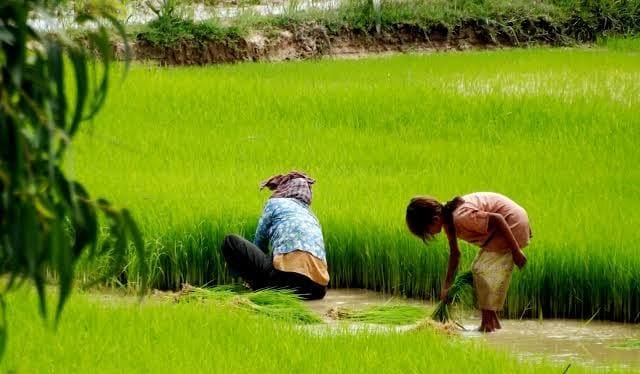New CPI series based on 2019=100 base year reveals inflation stability for rural and agricultural labourers with expanded coverage and updated methodology.
📍 New Delhi, July 18, 2025 | Economy India Bureau:
India’s Labour Bureau, under the Ministry of Labour and Employment, has released the Consumer Price Index (CPI) numbers for Agricultural Labourers (CPI-AL) and Rural Labourers (CPI-RL) for the month of June 2025, marking a significant shift by adopting a new base year of 2019=100 in place of the outdated 1986-87 base. The updated indices reflect moderate inflation and signal improved measurement of the cost of living for India’s rural workforce.
According to the data:
According to the data:
- The CPI-AL (Agricultural Labourers) stood at 134 in June 2025
- The CPI-RL (Rural Labourers) also stood at 134
- The year-on-year inflation rate for CPI-AL was 1.42%, while CPI-RL recorded 1.73%
These inflation rates are considered low and stable, offering relief in the backdrop of volatile global commodity prices and serving as an indicator of economic resilience in rural India.
🔄 Why the Base Year Was Updated to 2019=100
The CPI-AL and CPI-RL are critical indicators used to track inflationary trends among rural populations. However, until now, they had been calculated using a base year of 1986-87, making the indices outdated and less reflective of modern consumption and expenditure patterns.
The new base year (2019=100) was introduced to:
- Reflect updated rural consumption behavior
- Increase the reliability and policy utility of the indices
- Enhance comparability with other economic data like WPI and CPI-U
🧮 Key Methodological Improvements in the New Series
The revised CPI-AL and CPI-RL indices incorporate major technical improvements, aimed at ensuring more accurate and stable inflation measurement:
- Updated Consumption Weights: The share of various items in total expenditure has been revised in line with new consumption trends in rural households.
- Geometric Mean (GM) Instead of Arithmetic Mean (AM): The use of GM reduces the impact of price volatility and outliers, making the index more stable over time.
- COICOP 2018 Classification: The new indices adopt the Classification of Individual Consumption by Purpose (COICOP-2018), aligning India’s inflation statistics with global standards.
- Price Calculation Based on Acceptability: The revised method calculates prices of PDS (Public Distribution System) items based on their acceptability rather than availability, improving realism.
- Expanded Geographical Coverage:
- Earlier: 600 sample villages across 20 States
- Now: 787 sample villages across 34 States/UTs
This broader data base increases representation and accuracy in measuring rural price movements across diverse regions.

📈 June 2025 CPI-AL and CPI-RL Inflation Trends
The data for June 2025 shows a relatively mild inflationary environment:
| Index Type | Index Value (June 2025) | YoY Inflation |
|---|---|---|
| CPI-AL | 134 | 1.42% |
| CPI-RL | 134 | 1.73% |
This modest increase in prices suggests a stable cost of living for rural households, especially important for those dependent on agriculture and informal sector work.
🧑🌾 Relevance of CPI-AL and CPI-RL in Policy
These indices are vital policy tools, especially in shaping welfare schemes and labour decisions:
- Fixing minimum wages for agricultural and rural workers
- Determining MGNREGA daily wage rates
- Designing subsidies and social security entitlements
- Assessing rural purchasing power for planning poverty alleviation programs
The adoption of the new series will enhance the credibility and responsiveness of such government interventions.
📊 Implications for Rural Economy and Governance
The new CPI series comes at a time when India is focusing heavily on inclusive and rural-led economic growth. The inflation numbers, though low, will help in:
- Monitoring the impact of food and fuel prices on rural populations
- Evaluating effectiveness of price control policies
- Benchmarking poverty lines and cost-of-living adjustments
With improved coverage and accuracy, policymakers now have access to granular data from more regions and sectors to design targeted interventions for the rural economy.
(Economy India)














